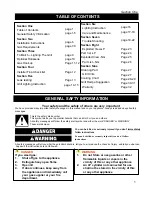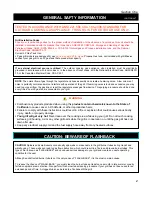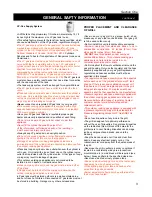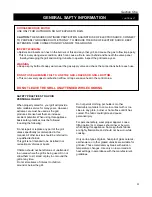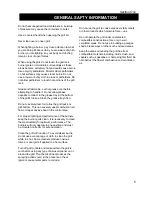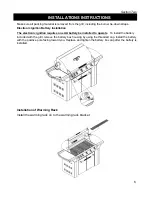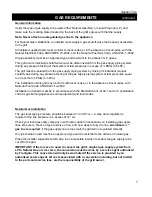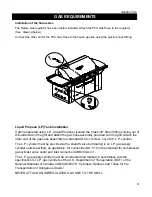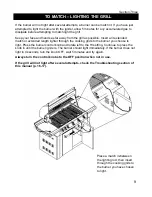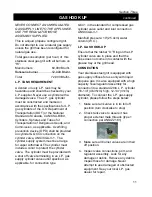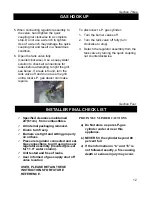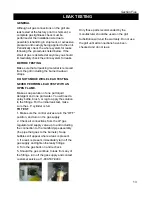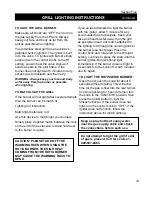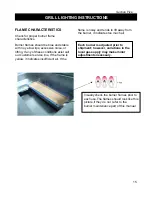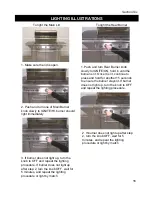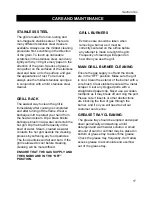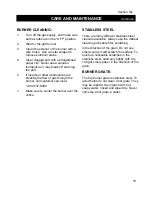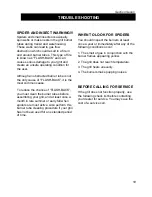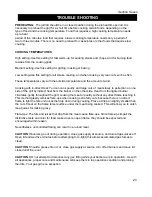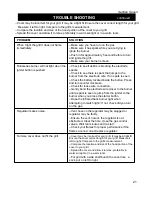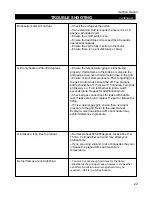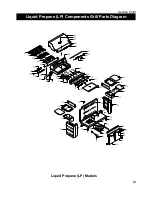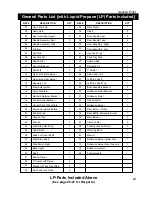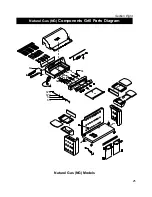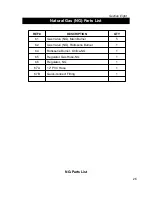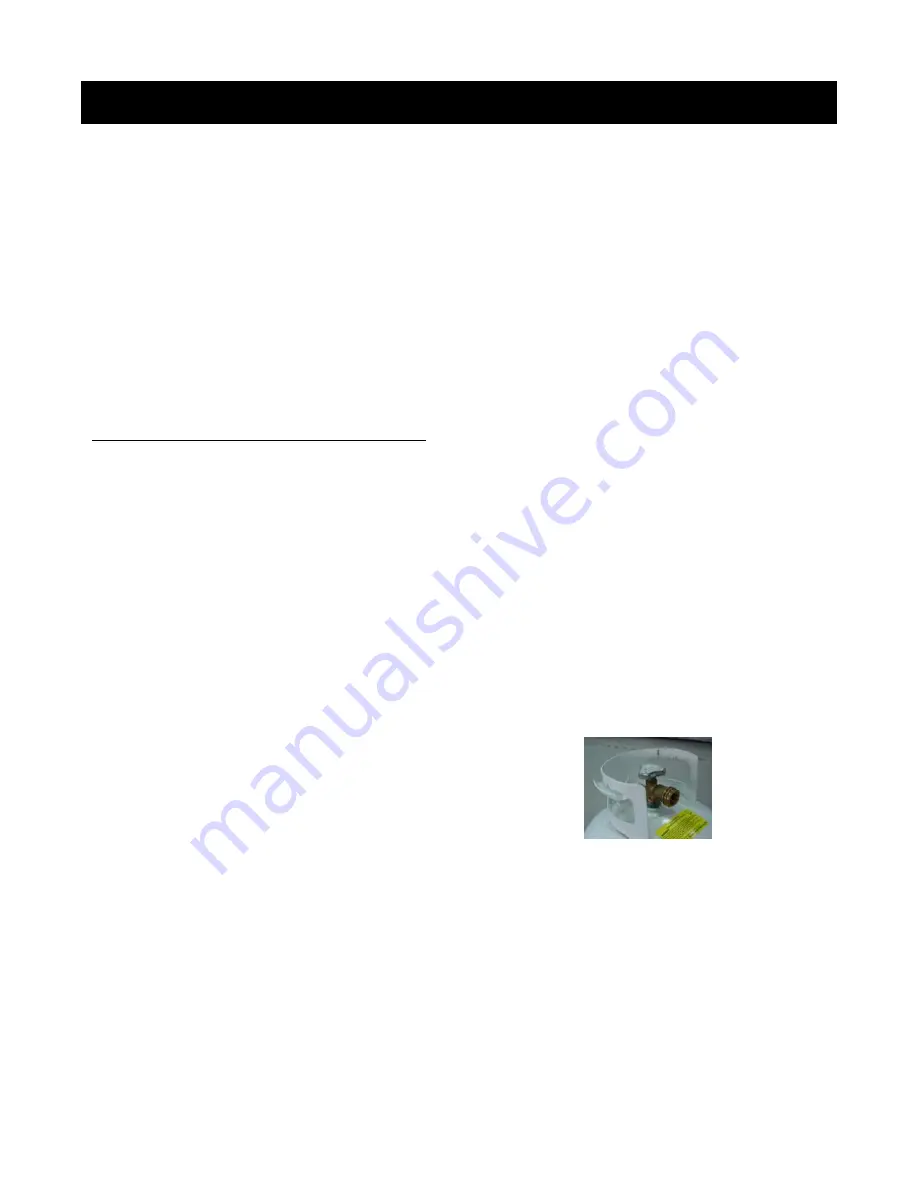
GAS HOOK UP
continued
NEVER CONNECT AN UNREGULATED
GAS SUPPLY LINE TO THE APPLIANCE.
USE THE REGULATOR/HOSE
ASSEMBLY SUPPLIED.
This is a liquid propane configured grill.
Do not attempt to use a natural gas supply
unless the grill has been reconfigured for
natural gas use.
Total gas consumption (per hour) of this
stainless steel gas grill with all burners on
“HI”:
Main burners
60,000 Btu/hr.
Rotisserie burner
12,000 Btu/hr.
Total
72,000 Btu/hr
.
.
L.P. TANK REQUIREMENT
A dented or rusty L.P. tank may be
hazardous and should be checked by your
L.P. supplier. Never use a cylinder with a
damaged valve. The L.P. gas cylinder
must be constructed and marked in
accordance with the specifications for L.P.
gas cylinders of the U.S. Department of
Transportation (DOT) or the National
Standard of Canada, CAN/CSA-B339,
Cylinders, Spheres and Tubes for
Transportation of Dangerous Goods; and
Commission, as applicable. Overfilling
prevention device (OPD) shall be provided
on cylinder & QCCI connection on the
cylinder valve, ANSI/CGA-V-1. The
cylinder supply system must be arrange
for vapor withdrawal. The cylinder must
include a collar to protect the cylinder
valve. The cylinder must be provided with
a shut off valve terminating in an L.P. gas
supply cylinder valve outlet specified, as
applicable, for connection type
QCC1 in the standard for compressed gas
cylinder valve outlet and inlet connection
ANSI/CGA-V-1.
Manifold pressure: 10”(25.4cm) water
column (W.C.).
L.P. GAS HOOK-UP
Ensure that the rubber “O” Ring on the LP
cylinder valve are in place and that the
hose does not come into contact with the
grease tray or the grill head.
CONNECTION
Your stainless steel grill is equipped with
gas supply orifices for use only with liquid
propane gas. It is also equipped with a high
capacity hose/regulator assembly for
connection to a standard 20lb. L.P. cylinder
(18-1/4” (46.35cm) high, 12-1/4”(31cm)
diameter). To connect the L.P. gas supply
cylinder, please follow the steps below:
1. Make sure tank valve is in its full off
position (turn clockwise to stop)
2. Check tank valve to assure it has
proper external male threads (type 1
connection per ANSIZ21.81)
3. Make sure all burner valves are in their
off position.
4. Inspect valve connections, port, and
regulator assembly. Look for any
damage or debris. Remove any debris.
Inspect hose for damage. Never
attempt to use damaged or obstructed
equipment. See your local L.P. gas
dealer for repair.
11
Section Three


